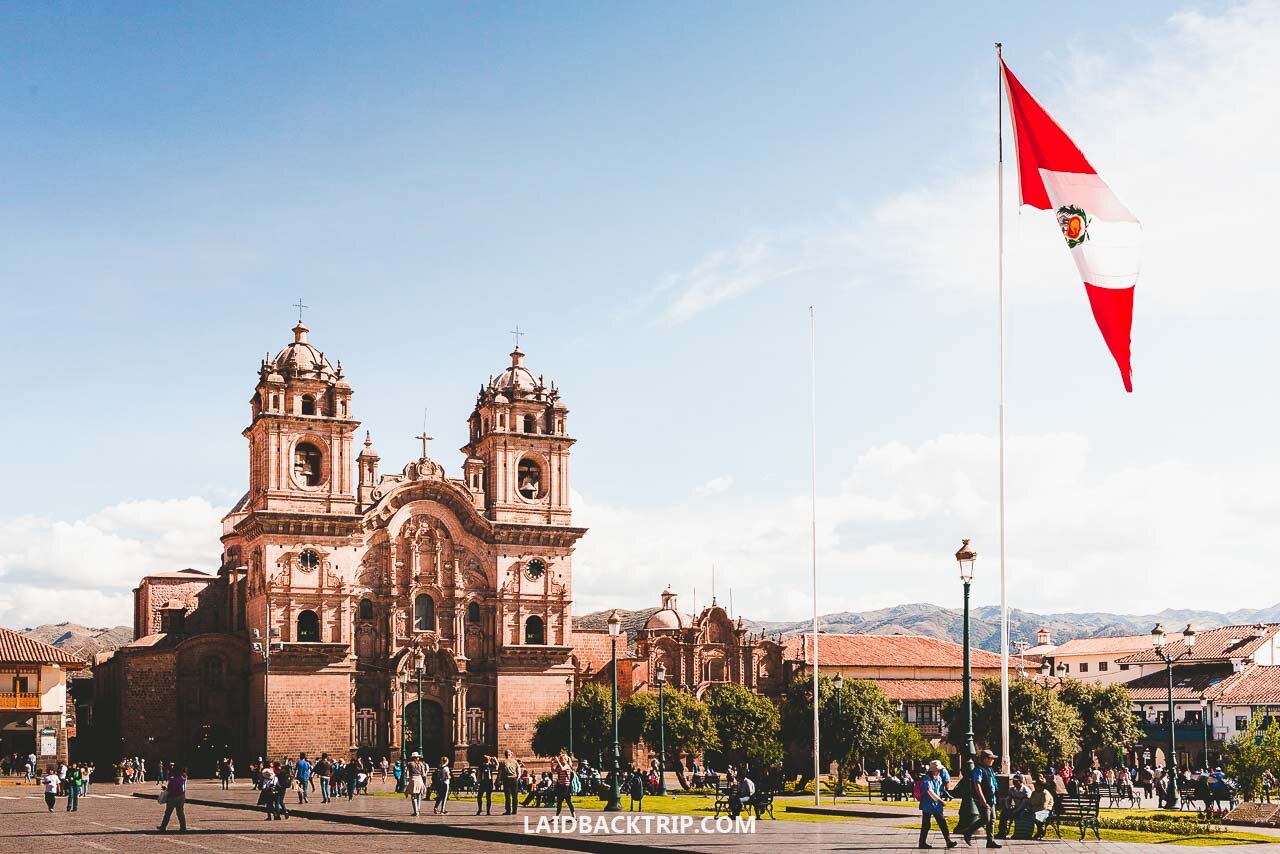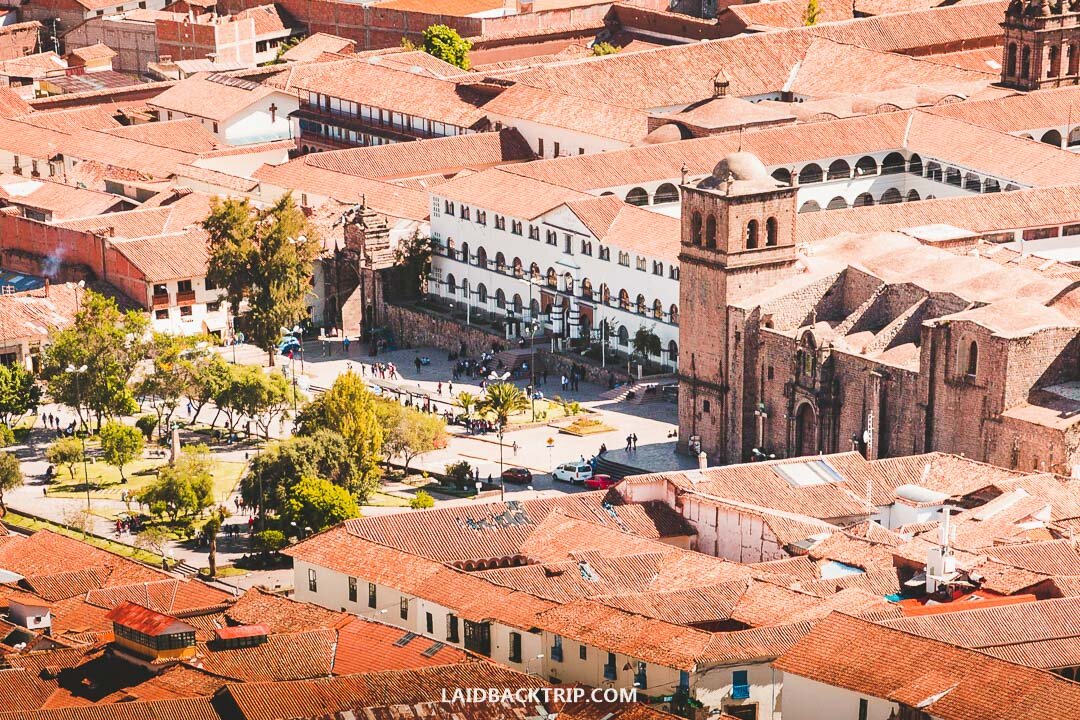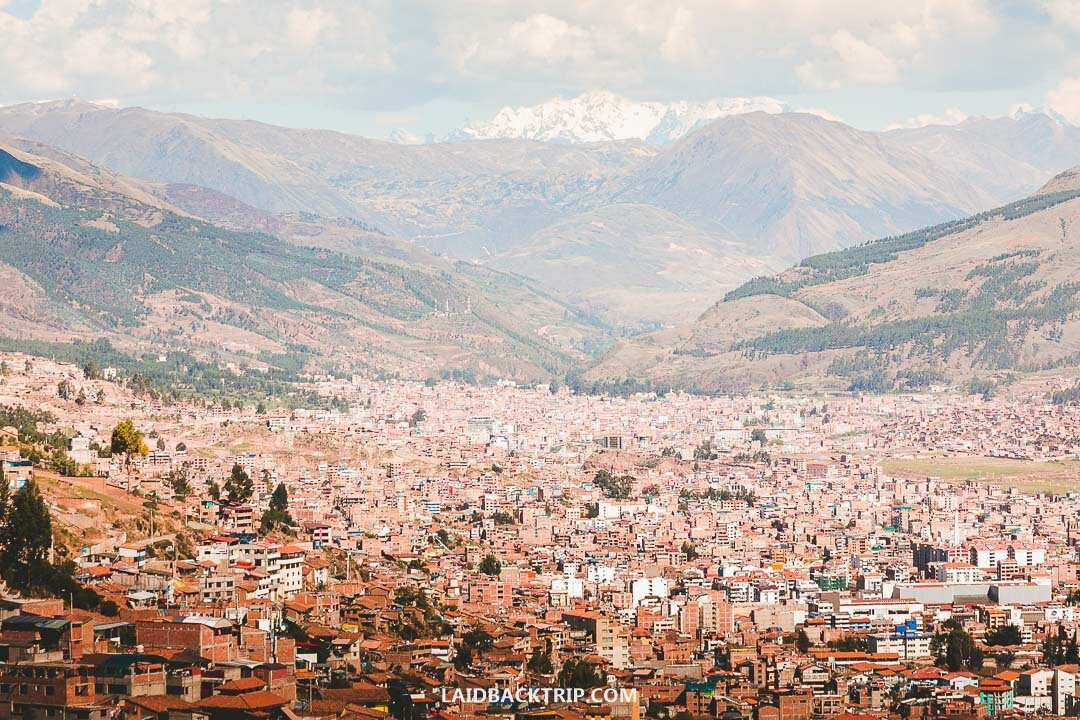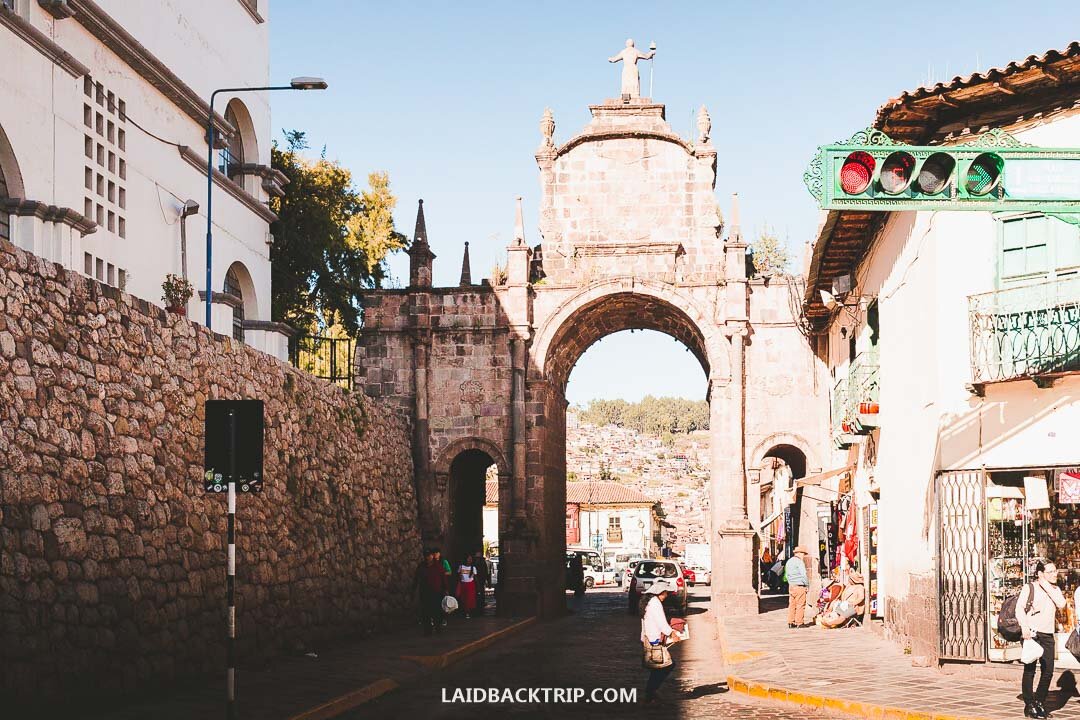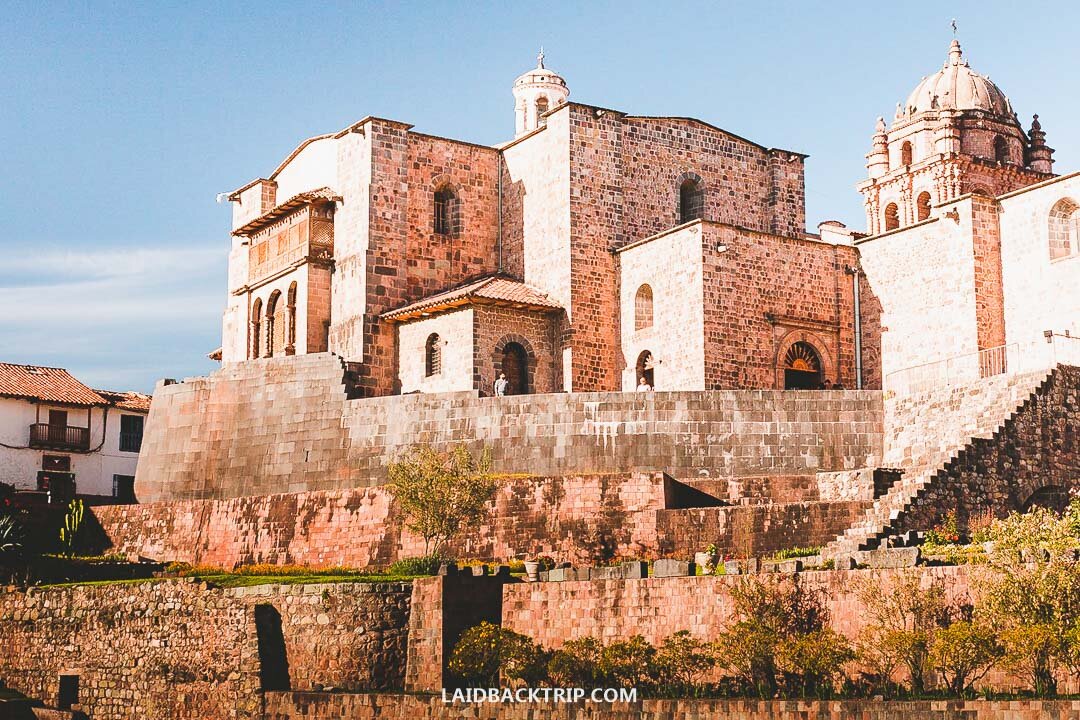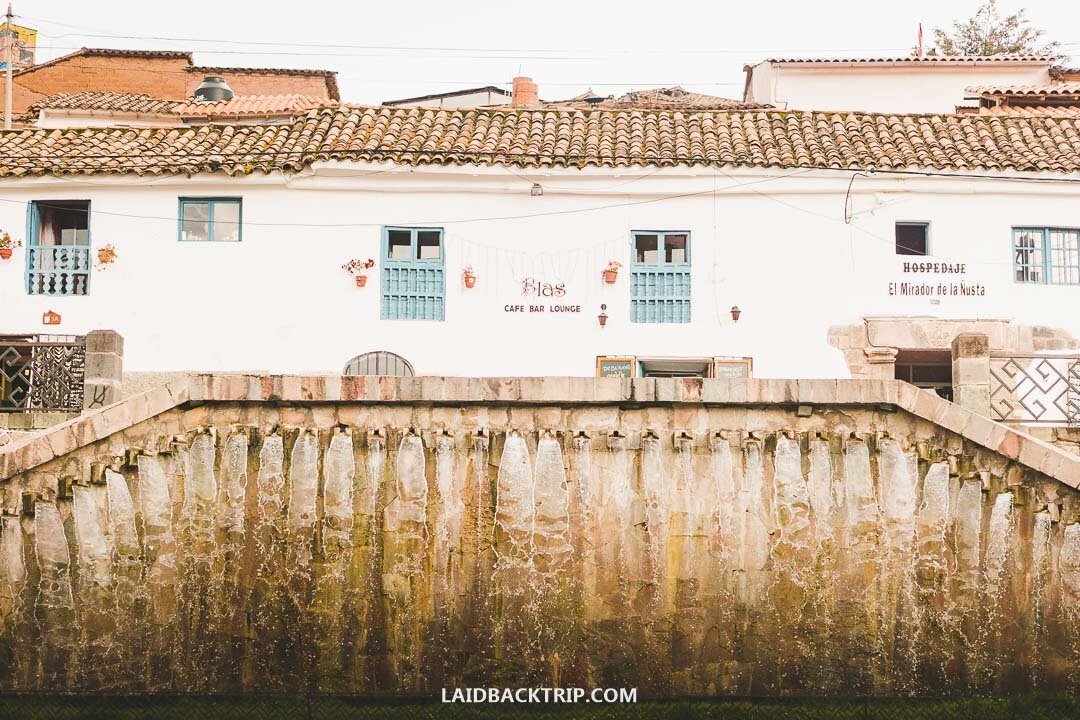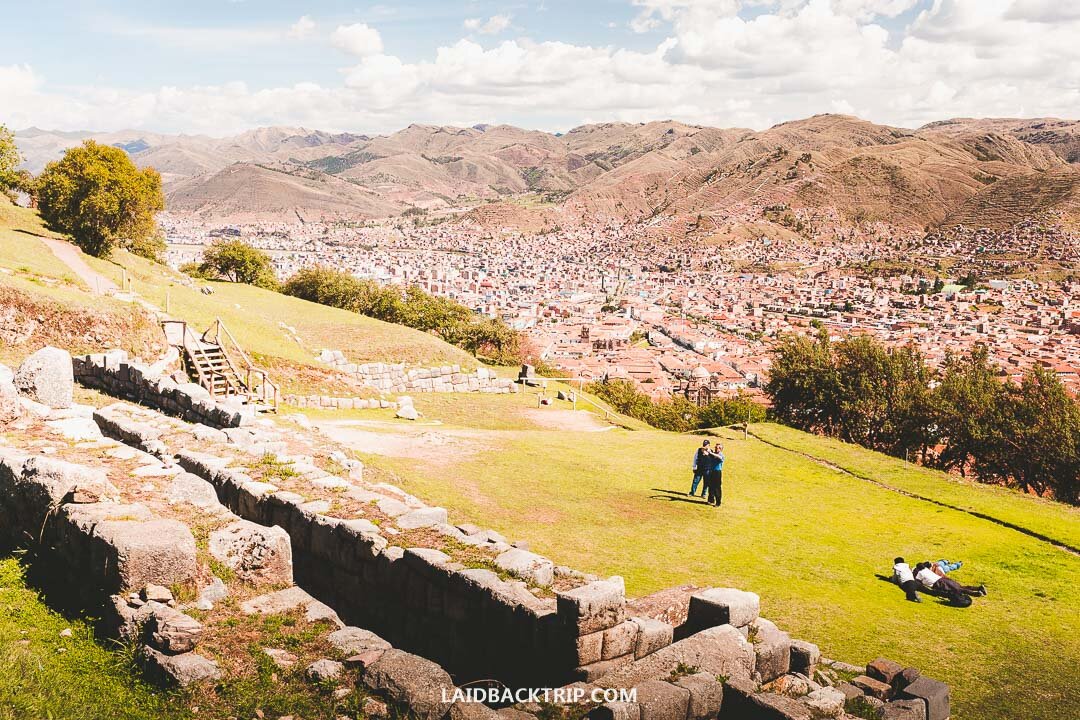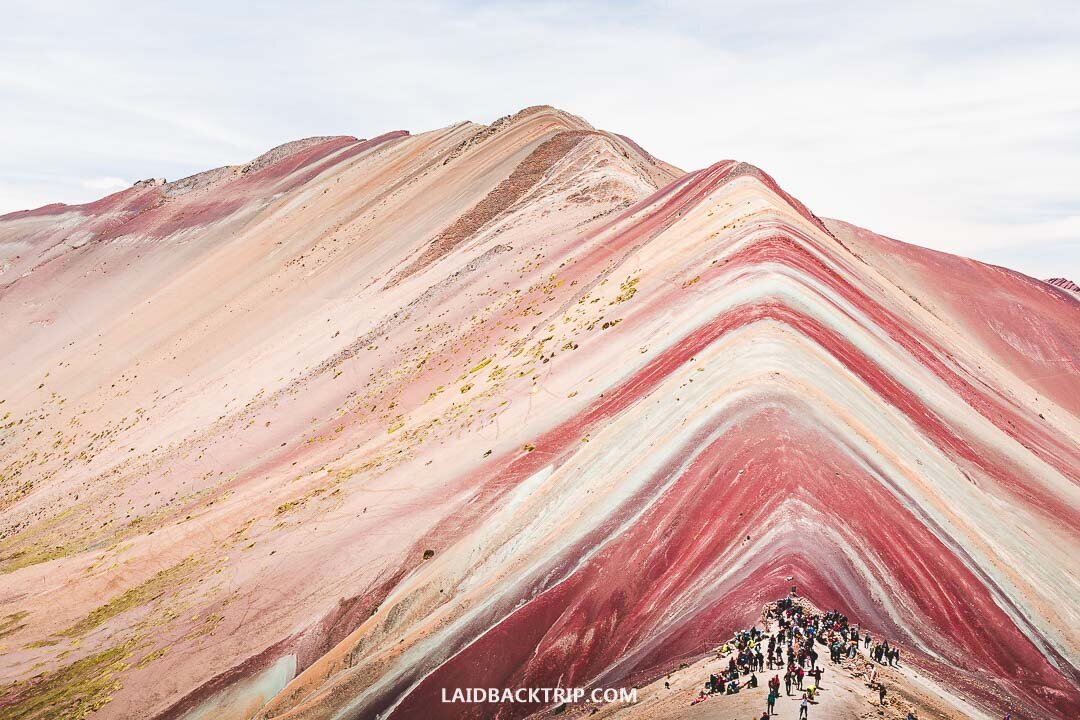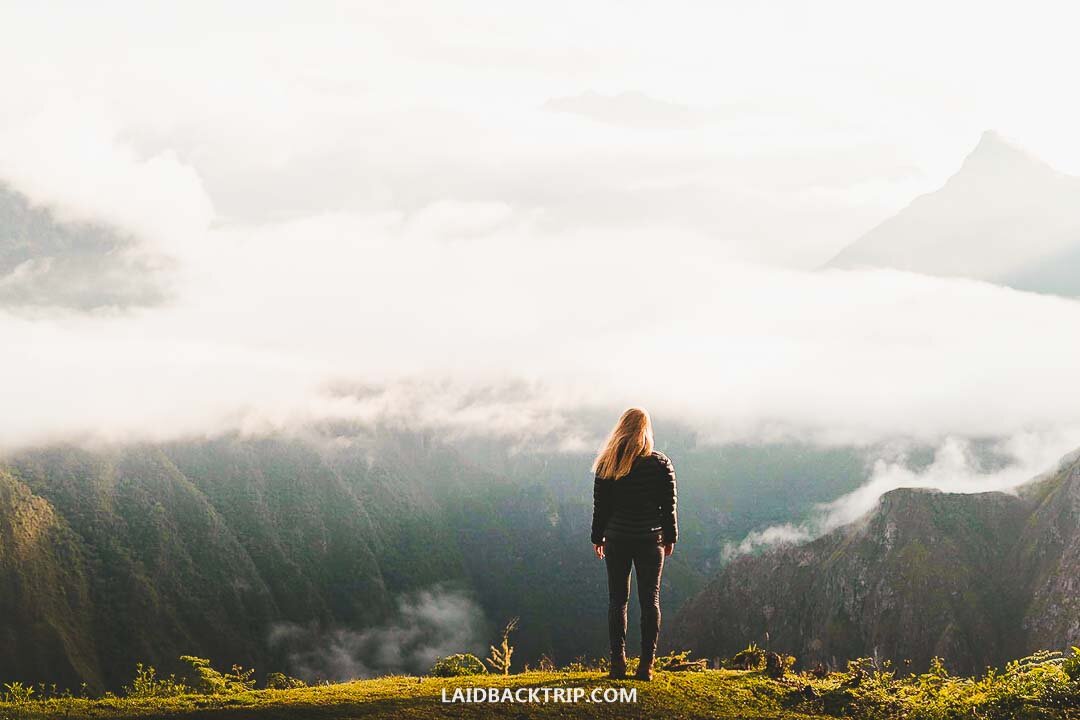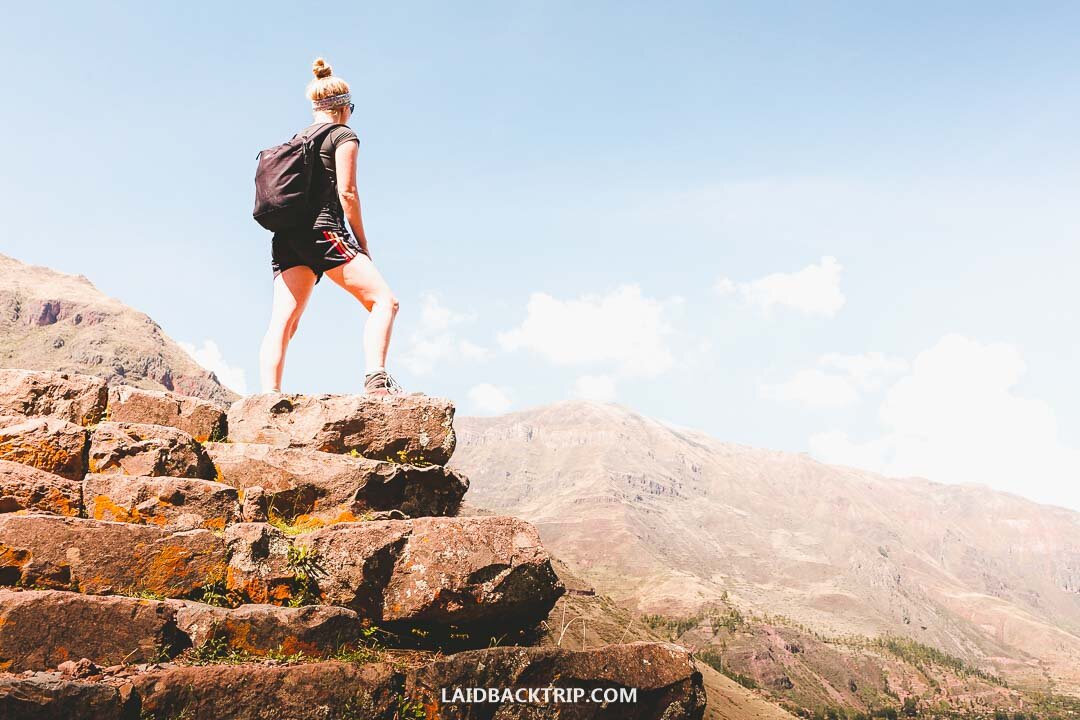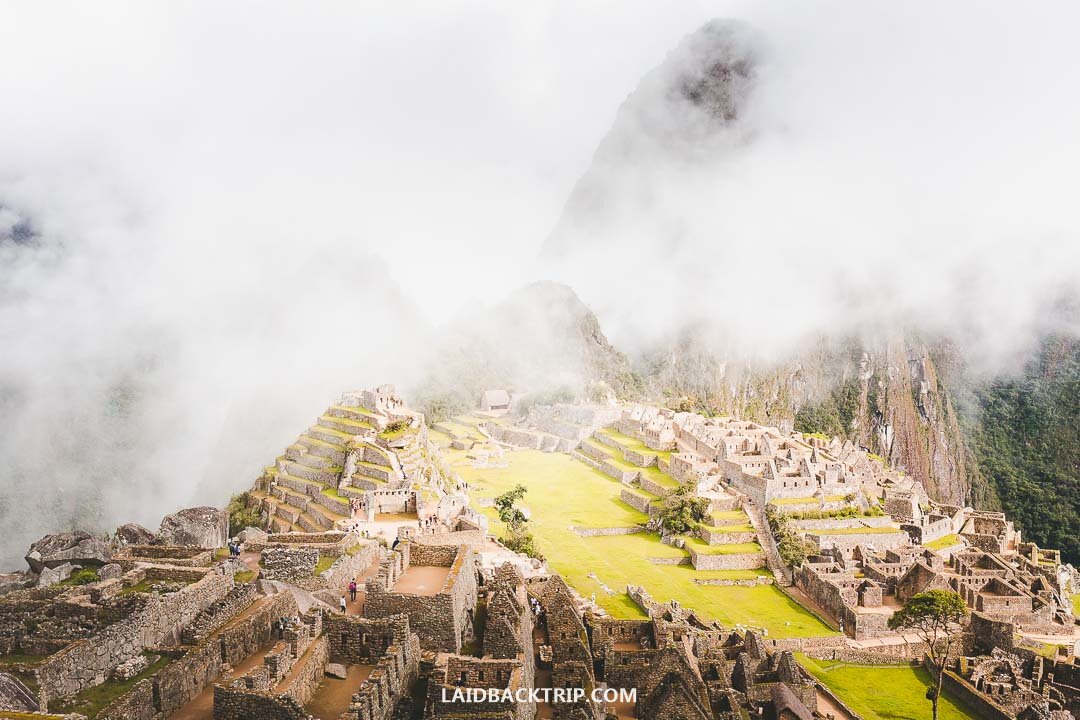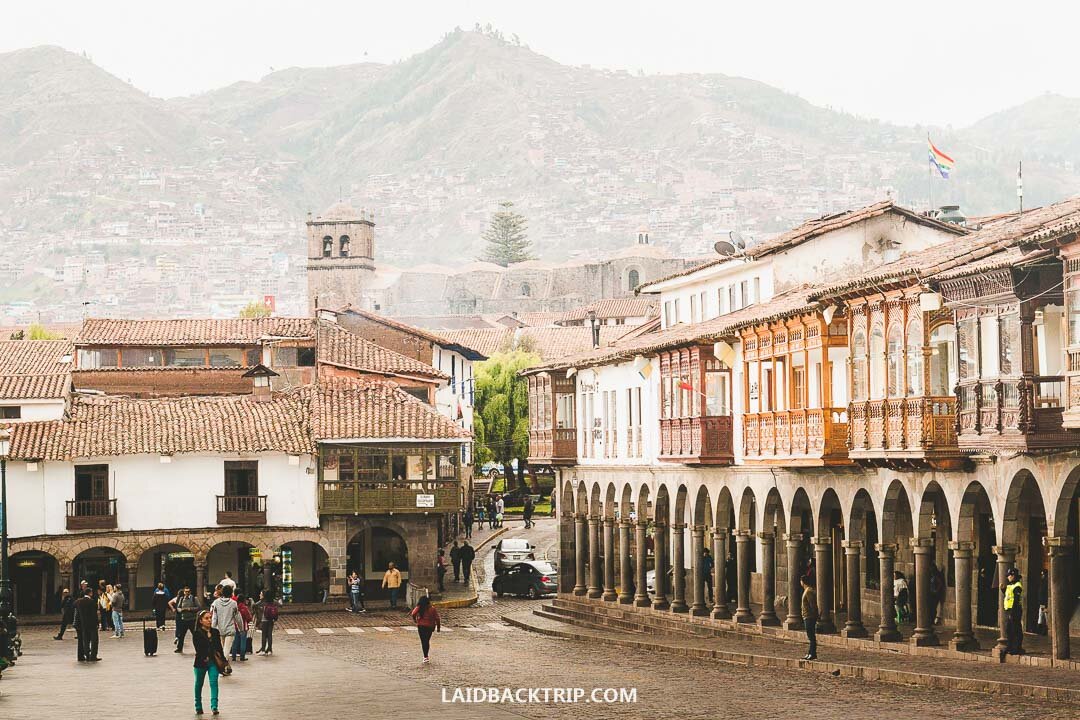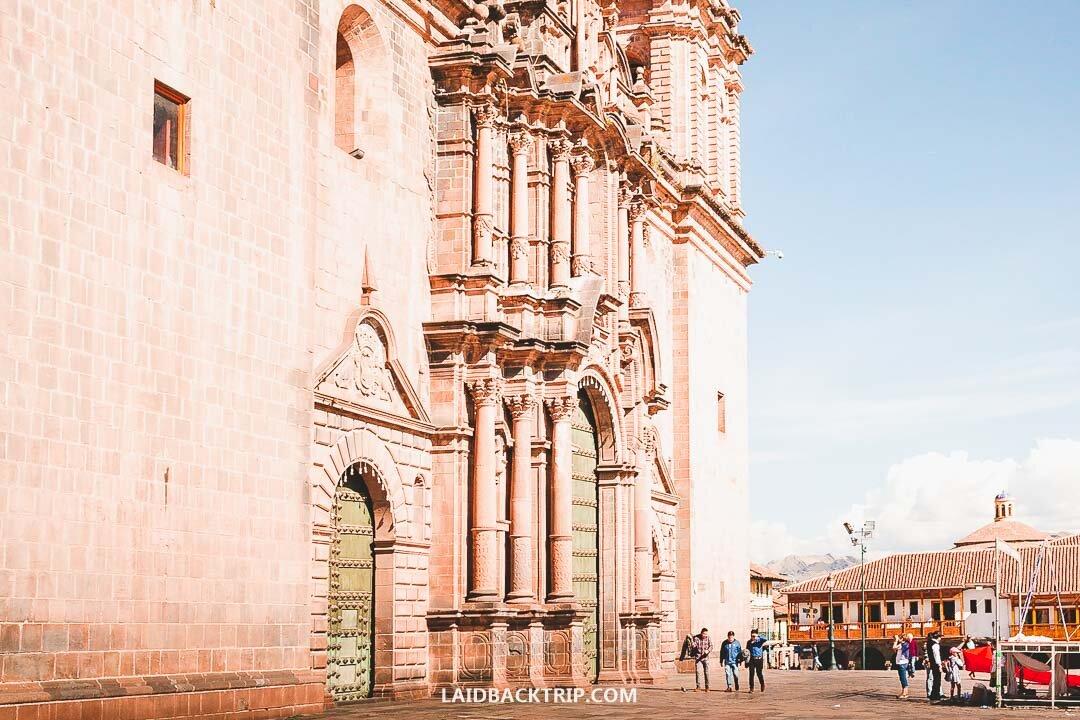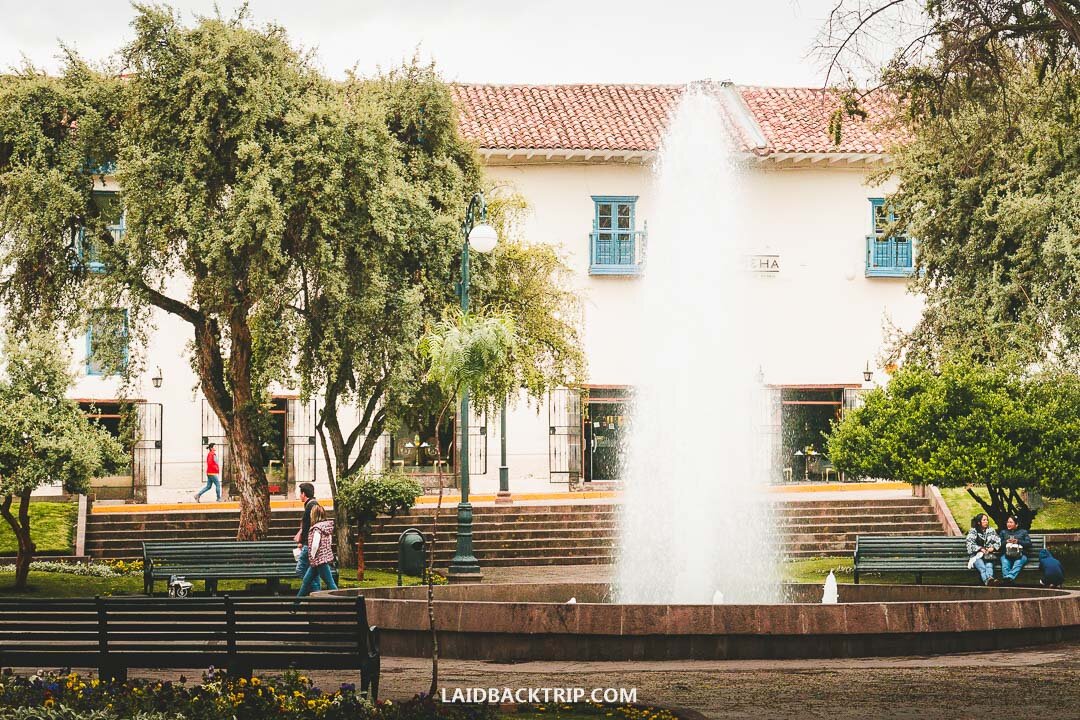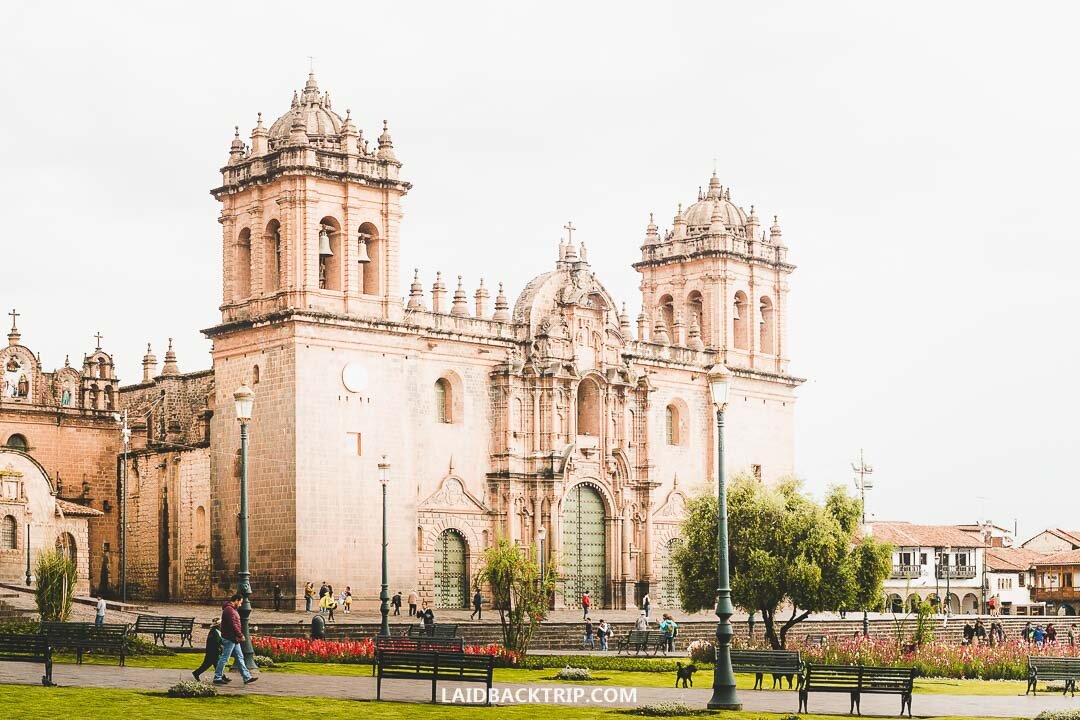The Ultimate Guide to Cusco, Peru
Our comprehensive travel guide to Cusco, the former capital of the Inca Empire, covers things to know before you go. One of the best cities in Peru, Cusco is also known as a gateway to Machu Picchu. Read tips on the best things to do in Cusco, top attractions, tours, day trips, safety, where to stay, what to pack, when to visit, how to get.
Cusco is a captivating city in the Peruvian Andes at an altitude of 3400 meters above sea level.
Once the capital city of the Inca Empire, Cusco still preserves its grandeur and the spirit of Incas, factors that cannot be overlooked, even if you would have tried hard.
Yes, it is touristy, and when walking in the historical center, you might have a feeling that the authenticity and Inca civilization heritage are long gone, but we recommend you to dig deeper and uncover the layer underneath.
Take your time, and we believe that once you get away from the crowds a bit, you will have a great time in Cusco.
As soon as you find a narrow stone-built alleyway, abandoned plaza or when searching for street food on the local market, you will suddenly understand the city's rhythm.
You will notice those small little things that were hidden even a moment ago, and you will appreciate how genuine the city is despite its touristy reputation.
Believe it or not, most local people still live their simple traditional lives in Cusco, which we liked the best here.
The combination of local life, indigenous people, street photo opportunities, beautiful landscape, top attractions, beautiful day trips, and the best things to do are the reason why Cusco is the top tourist destination in the country.
We spent more than two weeks in Cusco because we found there so many things to see and do not only in the city itself but also in the near surroundings, that we simply could not leave earlier.
Cusco was also our base for visiting Machu Picchu and hiking the Inca Trail and Salkantay Trek.
The beautiful nature and impressive ruins got under our skin, and it was hard to say goodbye.
To plan your time in Cusco better, we've put together this travel guide on everything every first-time traveler should know before visiting Cusco.
It includes advice on how many days to stay in Cusco, when is the best time to visit the city, where to stay, what to pack, and we also listed some of the best things you can see and do in the city.
HOW MANY DAYS FOR CUSCO
We are not afraid to say that Cusco is a place where every traveler ends up at least once during the trip around Peru, and it is hard to tell what is the right length of stay.
If your primary reason why to visit Cusco is to get to Machu Picchu, you still should spend here at least two days to acclimatize (despite the fact Machu Picchu is at a lower elevation than Cusco, some people still suffer from altitude sickness), and during this time you can explore the city and Sacred Valley.
Because we wouldn't want to miss the Sacred Valley and ruins near Cusco by no means, we would have considered two days for the city bare minimum.
But you can spend here only a day, and then travel slowly via the Sacred Valley and sleep in smaller towns on the way - that's also an option.
From our personal experience, we think that the longer you can stay in Cusco it is better.
Some travelers with limited time even revolve their entire itinerary around Cusco - this only proves how rich the city is in terms of sightseeing, architecture, and activities.
Cusco has so many things to see and do, not only within the city limits but mostly outside, that it is not a problem to spend here weeks.
If you are flexible, sit down, and write down all one-day and multi-day treks you would like to do from Cusco (keep reading to get an idea of the best things you can do in the historic city and around), and you should get the optimal number of days for you.
HISTORY OF CUSCO
Evidence proves that today's Cusco area was inhabited by farmers and shepherds more than 3000 years ago, but we know very little about this period.
Much later, between 900 - 1200 AD, the place was occupied by Killke people (pre-Inca people) who even built the famous Cusco ruin Sacsayhuaman, but because Incas later rebuilt the site, we call it Inca ruin.
Until today the arrival of Inca people is surrounded by a great deal of myth, but we know this era begins around 1200 AD.
Inca people were generally indigenous people who never developed written language, but they were exceptional builders and farmers. And for keeping records, Incas used a unique Quipu system known as knot language.
Cusco soon became the capital of the Inca Empire and the center of religion.
For almost four centuries, the Empire thrived, but it all ended when Spaniards arrived in 1533 and easily defeated Incas who did not know modern weapons and tactics.
Those who survived the battles soon died on diseases Spaniards brought from Europe.
Spaniards also destroyed many historical buildings in Cusco and built theirs on the remnants, but during the years, several earthquakes destroyed the city, but it is impressive that although Spanish buildings were damaged, Incan structures withstood.
During our modern history, Cusco was recognized as an exceptional architectural and cultural place and was UNESCO-listed.
THINGS TO DO IN CUSCO
Although it might seem that the best things to see and do in Cusco are not actually in Cusco, you still should spare at least one day to have time to explore the city's narrow streets and discover the indigenous heart which still strongly beats beneath.
Centro Historico is the area you should focus on in case you do not have that much time.
The longer you have, the more it gives you a chance to wander around and discover lesser know places.
We've handpicked the best things to do in Cusco and tips on the day trips from the city.
PLAZA DE ARMAS
The main square of Cusco known as Plaza de Armas is a place you cannot miss.
The large plaza is an architectural and cultural center of the city with a dominating green park in the middle and a bronze statue of the most well-known Incan ruler, Pachacutec.
On one side, you cannot overlook the magnificent Cusco Cathedral, a symbol of the Spanish conquest.
The rest of the square is lined with many charming buildings with arcades where you can have lunch or your morning coffee accompanied by beautiful views.
Plaza de Armas is the real center of Cusco that is dotted with restaurants (we preferred local eateries a few blocks away), coffee shops, outdoor clothes shops, and travel agencies - although at first, it might seem there's a lot to take in, do not get overwhelmed.
We're pretty sure that you'll intuitively visit the main Cusco's square several times during your stay so that you can take it all in little by little.
Another reason why visiting Plaza de Armas should be high on your to-do list in Cusco is that it is a great starting point for exploring other more or less famous top sights.
CORICANCHA
When Spaniards arrived in Peru, they wanted to defeat the Inca people in every way possible, and it also included destroying the outstanding architecture.
It did not happen only in Cusco, but also further north; one of the best examples is Chan Chan, which was once one of the most important cities in the area. But back to the point.
Coricancha was once the most notable structure in Cusco, known as Sun Temple, and its roof was made of gold. Spaniards melted the gold, and on top of the remnants, built their church of Santo Domingo.
Nowadays, we can see in Cusco this striking building with Incan foundation and Spaniard church on top of that.
Although nowadays Coricancha (also often spelled Koricancha or Qoricancha) and Santo Domingo Church are basically one building, there are two separate entrances.
The tour of Coricancha costs S/.15, while the access to Santo Domingo Church is S/.10.
Even if you are fine with admiring the site's exterior, this stop on your Cusco itinerary is definitely worth it.
There's a garden near this place, so you can just sit there and contemplate the history. We always liked to think how it would have been like hadn't Spaniards arrived.
SAN PEDRO MARKET
We are not saying San Pedro Market is the most authentic market you will ever see, but it still keeps its charm, and we consider it as one of the budget-friendly things to do in Cusco.
When we think of our visit retrospectively, we actually must change our statement a bit. When we were in Cusco, we really enjoyed the market, but we met there quite many tourists.
But after one year of traveling around South America, we must say that San Pedro Market was really unique, as it still has its soul (and smell), despite its popularity and size of the city.
Whether you want to buy fresh meat (no refrigerators, arrive early!), fruits or vegetables, buy a sweater from llama wool as a souvenir or want to have a quick lunch, you can find all of that at San Pedro Market.
As we spent quite a lot of time in Cusco, some days just waiting for our tour departure, it became our habit to stop by at the market and buy veggies for dinner.
You also might be surprised that you can buy in Cusco perfectly ripe watermelon or tasty grapes.
SAN BLAS
From Plaza de Armas, steep cobblestone streets lead to San Blas Plaza, the center of the San Blas district known for artisan shops, coffee shops, and galleries.
It is fun walking around San Blas as you can find here many hidden gems.
To be completely honest, we are often not fans of hippie places as it usually means that backpackers took over, but San Blas was a bit different, and we immediately understood what all the fuss about is.
Some of Cusco's top coffee shops are located in San Blas, so you can start your morning here every day and look for your favorite place.
San Blas is also interesting architecturally, so grab a camera in hand and start exploring its narrow streets. Thanks to the newly discovered popularity, you can even base yourself here in a hotel and hostel.
The good news is that San Blas is easily accessible from Centro Historico.
TWELVE ANGLE STONE
You cannot miss a walk via Hatunrumiyoc street in Cusco, home to a famous 12-angle stone. If pressed for time, you do not have to worry about visiting this site as the city is full of examples of how Inca people were skilled workers with stone.
Still, given the circumstances, the location is close to the city center, it is effortless to incorporate it into your itinerary.
The street is lined with a stone wall where you can admire how rigorous the Incan builders were.
Incas could cut massive stones that they fitted together with precision and with no mortar.
These structures and walls even survived numerous strong earthquakes in contrast with many modern buildings.
CHURCHES AND CATHEDRALS OF CUSCO
Cusco has many plazas with cathedrals and small churches, so take time to discover one or two outside the historic city center.
Actually, there are tens of churches and cathedrals within walking distance, and you'll undoubtedly stumble upon several of them when returning in the evening to your hotel.
Obviously, the most famous one is Cusco Cathedral on Plaza de Armas, but other gems such as San Francisco Church or San Cristobal Church are worth a quick stop as well.
These churches and cathedrals are usually built in European architectural style on the foundations of old Inca churches, which gives the city a unique appearance.
MUSEUMS
Before you arrive in Cusco, you will have to learn a new term, Boleto Turistico. This ticket has many variants and basically includes tickets to some of the top attractions within the city and in the area.
If you're a history buff, the good news is that one partial ticket includes the top museums in Cusco (and the integral ticket, of course, includes them too).
But unfortunately, not all attractive museums are included in this ticket, so you will need to pay most of the entrance fees separately.
For example, if you decide to see the Museum of Chocolate, Museum of Textiles, or Museum of Coca, make sure you have cash in your pocket.
Visiting a museum is a great plan when the weather does not play along, but it is also a great way to learn more about Cusco's history and events that define local peoples' life until these days.
SACSAYHUAMAN
Sacsayhuaman Ruins is a UNESCO listed site close to Cusco - you can get there from the city center via a series of stone steps, it should not take longer than 45 minutes, but public transport is available as well.
Sacsayhuaman is a pre-Incan structure. Killke people built it, but Incas later rebuilt the site; therefore, it is considered one of the best examples of Inca civilization's building skills.
If you are looking for a tip for a half-day trip, there's probably not a better thing to do than walk leisurely from Cusco's historical center to Sacsayhuaman Ruins.
No matter how many ruins you've already seen in Peru, this is simply a must. Not only you'll get the chance to admire what was left, but the views from this site are out of this world.
If you have more time, it is possible to take colectivo from Cusco and explore more ruins in the near vicinity, such as Qenqo, Puca Pucara, and Tambomachay.
VIEWS OVER CUSCO
When you decide to visit Sacsayhuaman, you can walk a bit further to either Christ Statue or to another ruin, Q'enqo, from where you will get amazing views over the large city.
Cusco, from above, is very photogenic, plus according to a legend, the city was built in the shape of a puma, so feel free to look for the resemblance with this mysterious animal.
When the visibility is good, the trip to a hill from where it is possible to overlook Cusco is a must as, except for the town itself, you can spot towering mountains and hills on the opposite side.
SACRED VALLEY
Only a short ride from Cusco is one of the most famous valleys in the world, the fabled Sacred Valley.
Stretching from Pisac where you can visit splendid Pisac ruins and indigenous market to Ollantaytambo, another town famous for ruins and also a train station for Machu Picchu, Urubamba alias Sacred Valley is a must-visit region.
The picturesque valley formed by the Urubamba River has fertile soil.
That's why Inca people needed to build so many agricultural terraces in order to grow crops. They did a fine job, and many of them were preserved from the past times until today.
The valley is dotted with many smaller or bigger ruins that are often not that famous such as Pisac or Machu Picchu, but give you the chance to escape crowds.
The valley was sacred to the Incas not only because they could produce food here, but it connected the capital city Cusco with Machu Picchu, an important religious site.
You can visit the best sites on Sacred Valley Day Tour.
Or you can travel slowly by public transport and stop in small towns on the way to Ollantaytambo and explore these sites independently.
It will only take you a bit more time, though.
BEST DAY TRIPS FROM CUSCO
Believe it or not, Cusco is not only a gateway to Machu Picchu. You can easily spend here days, weeks, or months in pursuit of looking for communities living high in the Andes the same way their ancestors had been living for centuries.
You can explore Inca ruins not less astounding than the famous lost citadel, hike in the mountains so high that you can almost touch the clouds which never stop rolling while trying to find yet another lake which would have been even bluer than the one you saw yesterday.
We spent more than two weeks in Cusco between two multi-day treks we have planned.
We did not have time to get bored because there are so many things to do around Cusco for all outdoor enthusiasts and architecture slash culture lovers that it is sometimes heartbreaking to choose which things to do and which to miss.
All day trips from Cusco have one advantage.
Because of many travelers concentrating in the area, all of them are easily accessible by public transport, and you won't have a problem finding a tour operator who will take you to the attraction you fancy.
We've written a full post about the best day trips from Cusco, so here we will only outline a few places which are worth your time and space on your itinerary.
HUMANTAY LAKE
Take a winding road from Cusco, and in three hours, you will reach a trailhead to Humantay Lake, one of the most beautifully colored glacial lakes we've ever seen.
Even though the Humantay Lake Hike is not the hardest hike in Peru, the altitude makes it quite challenging.
RAINBOW MOUNTAIN
Not sure if we have to introduce this spot, as it seems that everyone heading to Cusco also has hopes to see Rainbow Mountain. But you know what, after we saw Rainbow Mountain and Red Valley, we can only tell you, go for it.
Despite the crowds, it's one of the most out of this world places we've ever seen.
PISAC RUINS
Less than an hour from Cusco, you will find a small town, Pisac, well-known for two things. Traditional market and picturesque ruins perched atop a hill overlooking Urubamba Valley.
We hiked to Pisac Ruins from the the town sitting at the bottom of the Urubamba Valley independently and enjoyed it tremendously.
SACRED VALLEY
The famous Sacred Valley is a must-visit when in Peru. The landscape is so wonderful, plus you must visit other fascinating ruins, Ollantaytambo is one of them.
MORAY & MARAS
Have you thought of how were Inca people able to grow crops even from other parts of Peru when conditions were not welcoming?
You will find the answer in Moray, which is a unique agriculture laboratory. Only a short ride away is Salinas de Maras, famous for its salt ponds.
Hundreds of visitors visit them each day and you’ve probably seen the pictures on Instagram.
MACHU PICCHU
Yes, you don't need to stay overnight in Aguas Calientes to visit Machu Picchu. When you are on a strict schedule, you can see the Lost Citadel in one day and base yourself in Cusco.
BEST DAY TOURS FROM CUSCO
If you want to visit more sites in the Sacred Valley in only one day, you can reserve this Sacred Valley Tour.
Humantay Lake is quite far from Cusco with non-existent public transport, so the most popular way to reach the trailhead is with a tour operator.
This Humantay Lake Tour is popular and well-rated.
Rainbow Mountain is almost exclusively visited with organized tours unless you want to hire private transport.
Consider booking this Rainbow Mountain Tour.
Machu Picchu is easily doable on a day trip from Cusco. We beleive that the train ride is part of the experience, so we beleive this Machu Picchu Tour is a solid choice.
A more intimate experince delivers this Machu Picchu Small Group Tour.
TOP TREKS IN CUSCO
Cusco is not only base for popular day trips, but it is also a base from where trekkers set off for multi-day adventures in the Peruvian Andes.
In Cusco, you will find hundreds of travel agencies running multi-day treks, from the most famous ones to more specialized ones. It only depends on your adventurous soul and fitness level for how long you want to disappear in the Peruvian Andes.
Almost every traveler arriving in Cusco has two treks in mind - Inca Trail and Salkantay Trek.
The Inca trail is one of the most famous multi-day treks in the world because it goes via insanely beautiful landscape and several ruins to Machu Picchu, but it needs to be reserved at least a couple of months in advance.
That's why your real chance is to hike Salkantay Trek if you want to book a trek last-minute.
Unlike many hikers, we've done both treks, and you can read our comparison Inca Trail vs. Salkantay Trek here.
Only a small hint, Salkantay is by no means worse than the Inca Trail; it is only different. You can compare them and decide which hike to Machu Picchu is right for you.
Make sure to read our Inca Trail Packing List as hiking with guides and porters requires a bit different approach.
If you want to do something slightly different and hike off the beaten path, you can try Ausangate Trek, Choquequirau Trek, or Lares Trek, which has been increasingly popular in the past few years.
These treks are awesome alternatives to Salkantay Trek and the Inca Trail.
Guides working for travel companies in Cusco are usually locals who know all the trails well; they are experienced, so you can even ask them to prepare a completely unique multi-day route for you; it only depends on how much money and time you have.
MULTI-DAY TOURS FROM CUSCO
If you want to hike Lares Trek, which takes you through traditional Andean communities, you can do it on your own, although it is not recommended to inexperienced travelers.
The trail is not well-marked, and it's better to take a guided 4D/3N Lares Trek Tour.
Ausangate is one of the most extended and most challenging treks you can do from Cusco.
To make a reservation, shop around Cusco if you want to get the cheapest rate or book this well-rated 9D/8N Ausangate Trek in advance.
Salkantay Trek is doable both independently or with a guided tour. You can shop around and try to find the best deal last-minute or reserve 5D/4N Salkantay Trek here.
Inca Trail has the most restrictions out of all hikes in Peru, so it is impossible to hike it independently.
If you want to hike one of the best treks in the world, you can look for guided tours here.
You can book a classic 4D/3N Inca Trail or a shorter 2-Day Inca Trail Tour version.
ALTITUDE
If Cusco is your first destination in Peru, or if you are arriving in Cusco from the lowlands or even you spent a week or so by the sea, it can easily happen you will feel dizzy for a day or two before you get used to the altitude.
Cusco sits at 3400 meters above sea level, and although some people feel completely fine here (the lucky minority), many travelers often struggle and suffer from headaches, dizziness or breathlessness for a day or two before their bodies adjust to a thinner air.
Generally, all day trips from Cusco are high in the mountains, so it pays off to acclimatize in the city properly before you set off for your next adventures.
Fortunately, Cusco has so many things and activities to do that you won't have a feeling you are only killing time. Although acclimatization might seem unnecessary for some of you, we advise you not to underestimate it.
We met a couple of hikers who got quite sick, were even hospitalized, and one girl from our hiking group even could not start the Inca Trail.
Although you can never know how the altitude will affect you (it has nothing to do with physical ability or how your body reacted to altitude previously), there are several simple rules you should follow to maximize your chances to enjoy your time here.
Stay in Cusco at least a day or two before the hike or take a day trip to adjust your body to a higher elevation.
Drink enough water, do not eat heavy meals, don’t drink alcohol, and try to do some light physical activity.
As you can see, sightseeing in Cusco is not only pleasant for your soul of traveler but also beneficial to your health.
Travel Insurance
We never leave home without travel insurance that was designed to cover our expenses if something goes wrong during the trip.
Travel insurance protects against theft, flight delays, injury, illness, cancellations, and much more.
World Nomads provides travel insurance for travelers to cover their trip essentials, including sports and adventure activities.
SafetyWing is affordable travel insurance for backpackers, long-term travelers, and digital nomads.
Travel smarter and safer!
BOLETO TURISTICO - CUSCO TOURIST TICKET
When planning on visiting ruins or museums in Cusco or outside the city limits, you will soon come across the term Boleto Turistico.
Simply put, this is a ticket you will most likely need to purchase in case you want to see at least some of the best sights Cusco and the Sacred Valley have to offer.
Because it is no longer possible to buy a single ticket for each attraction (we are now talking about the picked best attractions), you need to know how much time you have for exploring Cusco and its surroundings and what you want to see.
Based on this information and your plans, you will find out if it pays off to purchase the full ticket for S/.130, which includes all 16 sights, and you can visit them in 10 consecutive days.
Or you can purchase a partial ticket for S/.70 which is valid for either one or two days, depending on which circuit you will choose.
At the moment, there are three circuits, and each contains several sites you cannot mix together.
The full ticket is quite expensive, especially for budget travelers, but we think it is worth buying it.
Frankly, how many times will you have a chance to visit Peru?
CUSCO IS A GATEWAY TO MACHU PICCHU
Although Cusco is not that close to Machu Picchu as you might think, it is the official gateway to the most famous destination on the continent.
You can be sure that every single traveler you meet in Cusco already visited or will visit Machu Picchu.
Although we recommend you to buy Machu Picchu tickets in advance, especially when traveling to Peru in the high season between May and October, you can buy your tickets here in Cusco in the Dirección Regional de Cultura Cusco office as well.
Everything connected with Machu Picchu starts in Cusco.
Both Salkantay Trek or the Inca Trail begins here in Cusco (not the trails but the tours).
When traveling on a budget you must get from Cusco to Hydroelectrica by bus and then carry on to Aguas Calientes on foot.
Even the famous Machu Picchu train sets off on the journey to foggy mountains either from Cusco (Poroy station is twenty minutes from the city) or from Ollantaytambo, where you need to get again, from Cusco.
WHEN TO VISIT CUSCO
Generally, when to visit Cusco depends on whether you want to have a higher chance to enjoy sunny days with clear blue skies, or if you don't mind experiencing shower from time to time and enjoy Cusco and all other sights nearby without crowds.
The Cusco region experiences two distinct seasons.
DRY SEASON
The dry season runs from May to October. During this time, it rarely rains, especially between June and August.
The weather is usually sunny, day temperatures are pleasant, but because this period is Peruvian winter, you can expect chilly mornings and evenings, and temperatures at night drop even to 0°C.
Because the weather is so promising and it falls on European and the USA holidays, you cannot be surprised that you will have to share Cusco with many other travelers, also expect higher prices.
You should reserve all the services well-in-advance.
May might be the best pick out of the winter months because nature is still lush green after rains, and there are not that many tourists yet.
WET SEASON
The wet season (when we stayed in Cusco) from November to April is, as the name suggests, predominantly wet, but it is not that bad how it sounds.
When it rains, it usually happens in the afternoon, temperatures are a bit higher during the day than in the dry season, and nights are much warmer as well.
Not that many people travel to Peru during this period (except for long-term travelers), so you can take advantage of emptier streets, lower prices, and you might even get that moody picture of Machu Picchu towering out of the clouds.
It rains a lot in January and February, so we would recommend not having a strict schedule and adjusting your Peru travel itinerary to the situation as landslides can occur (the Inca Trail is even closed for maintenance in February).
Generally, we would not avoid visiting Cusco or Peru overall at any time of the year; we would be only more cautious in January and February.
HOW TO GET TO CUSCO
Cusco is the top destination in Peru, so you cannot be surprised that the city is easily accessible no matter where you travel from - you can get to Cusco either by bus or by plane.
Budget travelers, including us, usually get around Peru by overnight buses. Distances between cities are vast, so it is a great way to save time and accommodation money.
We found buses in Peru comfortable and safe, and they arrived almost every time on time.
In Cusco, you will find the main bus terminal, Terminal Terrestre, a bit out of town, and it was one of the few occasions we had to use a taxi to get from the station to the city center in South America.
The price for gringos is S/.10, but it was S/.7 when the hostel owner called us a taxi, and the driver did not know it is not for a local but travelers.
Tourists usually travel by bus from either Puno close to the borders with Bolivia, Arequipa, or Nazca.
Cusco has the airport receiving both domestic and international flights (only from Bolivia and Chile), so you will need to fly to Lima, and from Lima, take a short, direct flight to Cusco.
Traveling to Cusco by air is the best option for everyone visiting Peru only for a short time because flights are not expensive.
It will save you lots of time, and you will avoid a certain level of discomfort.
Getting from the airport to the city center is relatively cheap compared to rates in Europe.
You can take a taxi at the airport or reserve Cusco airport transport in advance.
HOW TO GET AROUND
We found the city center of Cusco very compact and easily covered on foot. Here we must admit that we don't bother to call a cab when our destination is within 20-30 minutes walk.
When we needed to get from our hostel to a colectivo station, for example, to Pisac or anywhere else, we walked.
Otherwise, there are plenty of taxis in Cusco. They are literally everywhere and you won’t have a problem to hail a cab on the street.
Friendly advice, always settle on the price before you go.
WHAT TO PACK
When in Cusco, you must be ready for hot days, chilly nights, and some rain, especially when visiting the city during the rainy season.
We've created a full post on What to Pack for South America, but here are a few absolute essentials you need to pack when traveling to Cusco.
Walking Cusco's cobblestone streets require only comfy sneakers, but we would recommend you wearing proper waterproof hiking boots with quality soles for any trip outside Cusco.
In the rainy season, you can experience short but powerful showers.
Having a good rain jacket is a must, and we have nothing but words of praise for these dry sacks that helps keep our valuables dry.
When the sun shines or even when it is cloudy, do not forget to apply strong sunscreen.
Tap water is not drinkable in Peru.
To reduce your plastic waste, we recommend carrying around a reusable water bottle (some hotels offer free refills).
Or consider investing in SteriPen that purifies the water or water bottle with integrated filter.
For walking around the city or hiking in the mountains, make sure you have a daypack where you can fit water, snack, sunscreen, and extra clothing layers.
It is chilly at night, especially during the high season from May to October, so pack a reliable fleece jacket that will keep you warm.
Last but not least, you really want to keep your camera handy as Cusco is an incredibly photogenic place.
We enjoy using a compact mirrorless camera for street photos, as people are more relaxed when taking pictures of them.
WHERE TO STAY IN CUSCO
As you could read in this travel guide, there are so many things to see and do in Cusco and its surroundings that the city certainly deserves more than one day of your time.
To enjoy your days in Cusco the most, it is essential to choose the right accommodation.
The good news is that Cusco has a great network of hotels for every type of traveler, from cheap hostels to luxurious mansions.
That's why your only job is to find a hotel in a location that suits you the best.
We recommend staying close to Centro Historico unless you want to stay away from crowds.
We've selected the three best hotels in Cusco, so feel free to get inspired.
Budget | Cusco Bed and Breakfast - Spacious and clean rooms, comfortable beds, very quiet at night, excellent location.
Mid-range | Tierra Viva Cusco Centro - Providing a tranquil environment, beautiful rooms and also has one of the top-rated locations in Cusco.
Luxury | JW Marriott El Convento Cusco - The hotel features impressive interiors, has a charming colonial courtyard, luxury rooms, and Cusco’s cathedral or main square are only three blocks away.
WHAT TO EAT AND DRINK IN CUSCO
It is no secret that we were not big fans of South American cuisine, at least in our budget category. But here are a couple of things you should taste when in Cusco.
Every restaurant in the city will try to sell you cuy alias guinea pig. Our guide on the Inca Trail disclosed to us; locals never go to a restaurant to eat cuy without calling there, at least one day in advance, and making a reservation.
They also do not forget to mention they want to have a fresh guinea pig. Do it the same way; otherwise, you will get a defrosted meat which will be hard to chew.
Our lifesaver in Cusco was our favorite restaurant serving Pollo a la Brasa alias rotisserie chicken with fries, rice, and salad. Yes, it is not traditional Peruvian cuisine, but it at least had some taste.
We usually don't eat sweets, but we made an exception here in Peru, where we tried delicious churros for only S/.1.
If you don't know what to drink in Cusco, you can always try coca tea, which will also help you deal with altitude sickness, or the all-time favorite alcohol drink Pisco Sour.
SAFETY IN CUSCO
Cusco is a touristy city, and most of the locals live from tourism, so crime against tourists is frowned upon, which does not mean it cannot happen from time to time.
That's being said, we spent plenty of time in Cusco and felt very safe here, much safer than in other destinations in Peru.
However, you should follow the same common safety rules you usually do.
Try to minimize to minimum walking alone at night (the city did not feel sketchy unlike Lima), keep an eye on your valuables, or better leave it in your hotel room, do not show off your expensive camera, and travel by radio taxi.
Don’t forget to read our article Is It Safe to Travel to South America?
Travel Resources
Here you can find links to all the travel resources we use and which you might find helpful when planning your next holiday.
Accommodation: When looking for accommodation, we usually search hotels via Booking.com or Hostelworld.
Tours: Although we love to travel independently, some places are better to visit with a guided tour.
We prefer GetYourGuide for its easy-to-use interface and solid reputation. Another great alternative is Viator.
Rental Cars: When going on a road trip, we always use Rentalcars.com, a reliable site for booking a rental car in advance.
Flight Tickets: When looking for flight tickets, you can search Skyscanner to find the best price.
Travel Insurance: World Nomads and SafetyWing cover against risks of travel.
